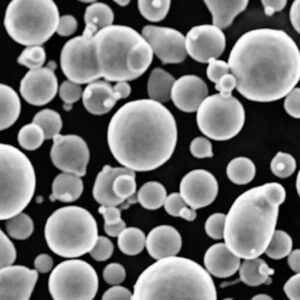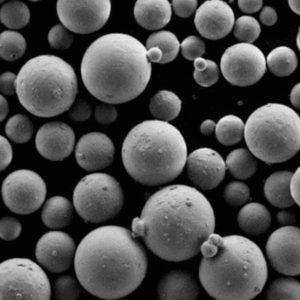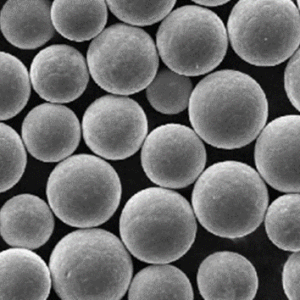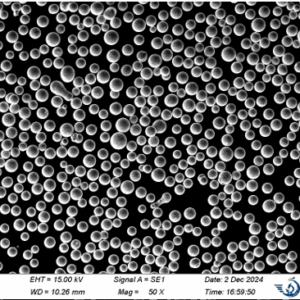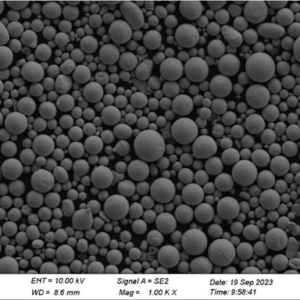Introduction
In the world of advanced metallurgy, few materials achieve the high-performance standards of Stellite 21 Powder. Known for its exceptional wear resistance, high-temperature strength, and corrosion resistance, Stellite 21 is the go-to material in industries demanding the toughest components. But what makes this cobalt-based alloy truly unique? How does it stack up against other metal powders in terms of performance, price, and practicality? Whether you’re an engineer looking for reliable materials or simply curious about innovative alloys, this article unpacks everything you need to know about Stellite 21 Powder.
Let’s dive into the nitty-gritty of what Stellite 21 Powder offers and why it’s a popular choice for many industrial applications.

Overview of Stellite 21 Powder
What is Stellite 21 Powder?
Stellite 21 Powder is part of the Stellite alloy family, renowned for its cobalt-chromium-based composition that delivers excellent resistance to wear, heat, and corrosion. Unlike many metal powders, which may weaken under extreme conditions, Stellite 21 remains stable and resilient, even in high-temperature and abrasive environments.
This alloy is favored across industries like oil and gas, aerospace, and automotive, where components are constantly exposed to harsh conditions. What sets Stellite 21 apart is not just its strength but also its ability to retain hardness even after extensive wear—a key factor that extends the lifespan of critical machinery parts.
Why Use Stellite 21 Powder?
Stellite 21 is primarily chosen for its ability to provide durable, high-performance surfaces through methods like thermal spraying and welding applications. Thanks to its unique properties, it offers:
- High Resistance to Corrosion and Oxidation: Making it ideal for chemically aggressive environments.
- Superb Wear Resistance: Ensuring longevity and less frequent replacements.
- Thermal Stability: Withstanding temperatures that might degrade or weaken other alloys.
Composition and Characteristics of Stellite 21 Powder
The unique blend of elements in Stellite 21 Powder contributes to its standout characteristics. Here’s a closer look at what goes into this alloy and why each element matters:
Composition of Stellite 21 Powder
Stellite 21 Powder is primarily composed of cobalt (Co), with significant amounts of chromium (Cr) and molybdenum (Mo). These elements create a hardened matrix that provides excellent resistance to wear and corrosion. Below is a breakdown of the typical composition:
| Element | Composition (%) | Function |
|---|---|---|
| Cobalt (Co) | 50-65% | Base metal providing strength and thermal stability. |
| Chromium (Cr) | 25-30% | Adds corrosion and oxidation resistance. |
| Molybdenum (Mo) | 2-6% | Increases toughness and impact strength. |
| Nickel (Ni) | 1-3% | Enhances toughness and resistance to oxidation. |
| Carbon (C) | 0.20-0.35% | Adds hardness for improved wear resistance. |
Each element in Stellite 21 is carefully balanced to ensure optimal performance in demanding applications. For instance, the high chromium content creates a protective oxide layer, shielding the alloy from corrosive attacks and high temperatures.
Characteristics of Stellite 21 Powder
Stellite 21’s properties make it an all-star in environments where high strength and durability are essential. Let’s explore some of its most valued characteristics:
- Corrosion Resistance: Effective even in environments with frequent exposure to acids or aggressive chemicals.
- Hardness: With a Rockwell hardness rating typically between 35-45 HRC, Stellite 21 is built to last.
- Machinability: Stellite 21 can be challenging to machine but performs well in applications where components experience sliding wear.
Applications of Stellite 21 Powder
Due to its robust qualities, Stellite 21 Powder finds applications across multiple industries where durability is essential. Here’s a look at common uses and the specific benefits it offers in various applications:
| Industry | Applications | Benefits |
|---|---|---|
| Aerospace | Turbine blades, exhaust valves | Withstands high temperatures and oxidation |
| Oil & Gas | Valve seats, drilling tools | Resists corrosion from harsh chemicals and seawater |
| Automotive | Engine components, fuel injectors | Provides durability for high-wear areas |
| Medical | Surgical tools, dental equipment | Biocompatible and corrosion-resistant |
| Power Generation | Pumps, heat exchangers | Maintains strength and hardness under high heat |
From valve seats in the oil industry to turbine blades in aerospace, Stellite 21 provides the resilience and longevity that these demanding applications require.
Specifications and Sizes of Stellite 21 Powder
When selecting Stellite 21 Powder for specific applications, it’s essential to consider the right specifications. Different grades and particle sizes offer versatility for various applications. Below is a table summarizing these specifications:
| Specification | Description |
|---|---|
| Grades | Standard, Premium |
| Particle Sizes | Fine (<45 microns), Medium (45-90 microns), Coarse (>90 microns) |
| Standards | ASTM F75, ISO 5832-4 |
Suppliers and Pricing for Stellite 21 Powder
Finding reliable suppliers for Stellite 21 Powder is crucial for ensuring quality and consistency, especially for high-stakes applications. The cost of Stellite 21 Powder can vary based on factors such as purity, grade, and quantity ordered, as well as additional services like custom sizing and powder preparation.
Here’s a list of some reputable suppliers that offer Stellite 21 Powder, along with approximate pricing and other relevant details:
| Supplier | Location | Price Range (per kg) | Minimum Order Quantity | Additional Services |
|---|---|---|---|---|
| Kennametal | USA | $100 – $150 | 10 kg | Custom particle sizing |
| Oerlikon Metco | Switzerland | $120 – $160 | 5 kg | Powder preparation for thermal spray |
| Carpenter Technology | USA | $90 – $130 | 20 kg | Technical consulting for applications |
| Praxair Surface Technologies | USA | $110 – $140 | 10 kg | Supply chain logistics, packaging |
| Sandvik AB | Sweden | $95 – $140 | 15 kg | Powder metallurgical services |
While prices can fluctuate, factors like bulk orders and supply agreements with large distributors can help manage costs effectively. For companies needing regular supply, negotiating long-term contracts with these suppliers can provide both price stability and priority fulfillment.
Comparing Stellite 21 with Other Metal Powders
When selecting a metal powder, it’s essential to understand how Stellite 21 compares to other popular metal powders. Common alternatives include Inconel 625, Hastelloy C, and Tungsten Carbide powders, each with their unique strengths and ideal applications. Here’s a comparative table to highlight the differences:
| Powder | Composition | Strengths | Limitations | Best for Applications |
|---|---|---|---|---|
| Stellite 21 | Cobalt-chromium alloy | Excellent wear and corrosion resistance | High cost; challenging to machine | Aerospace, oil & gas, medical tools |
| Inconel 625 | Nickel-chromium alloy | Outstanding high-temperature strength | Lower wear resistance compared to Stellite | Chemical processing, marine environments |
| Hastelloy C | Nickel-molybdenum-chromium | Superior corrosion resistance | Expensive, limited wear resistance | Chemical and aerospace industries |
| Tungsten Carbide | Tungsten-carbon compound | Exceptional hardness and wear resistance | Lower corrosion resistance | Cutting tools, mining equipment |
| 316 Stainless Steel Powder | Iron-chromium-nickel | Cost-effective and corrosion-resistant | Limited high-temperature stability | General manufacturing, food processing |
Stellite 21 vs. Inconel 625: While both powders excel at high-temperature applications, Stellite 21 offers superior wear resistance, making it ideal for parts subjected to friction or sliding. In contrast, Inconel 625 is slightly better suited for environments with intense thermal cycling, where maintaining structural integrity is crucial.
Stellite 21 vs. Tungsten Carbide: Tungsten Carbide is incredibly hard and durable but falls short on corrosion resistance compared to Stellite 21. Therefore, Stellite 21 is the preferred option in chemical and marine applications where exposure to corrosive substances is common.
Each material serves distinct needs, so understanding these differences can guide the right choice based on the environmental demands and expected performance.
Pros and Cons of Stellite 21 Powder
To decide if Stellite 21 Powder is the ideal fit for your application, let’s explore its benefits and some limitations. While its advantages often outweigh its drawbacks in many high-demand industries, knowing both can help you make an informed decision.
| Aspect | Advantages | Limitations |
|---|---|---|
| Wear Resistance | Maintains hardness under abrasive conditions, ideal for sliding parts. | May not offer the absolute highest hardness like Tungsten Carbide. |
| Corrosion Resistance | High chromium content shields against oxidation and corrosive environments. | Costs are generally higher than steel or stainless steel alternatives. |
| Thermal Stability | Stable at high temperatures, preventing deformation or breakdown. | Difficult to machine, requiring specialized tooling. |
| Versatility | Usable in thermal spraying, welding, and powder metallurgy. | Limited applications in environments with extreme cyclic stresses. |
If your project demands exceptional durability and corrosion resistance, Stellite 21 is an ideal choice. However, the high cost and machining difficulty could be limitations depending on the budget and required tolerances.
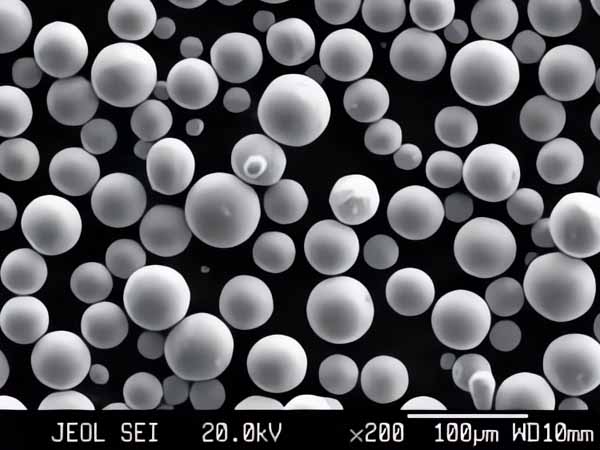
FAQ
Frequently Asked Questions about Stellite 21 Powder
| Question | Answer |
|---|---|
| What is Stellite 21 Powder commonly used for? | Stellite 21 Powder is used in industries such as aerospace, oil and gas, automotive, and medical for parts that require exceptional wear and corrosion resistance. |
| How does Stellite 21 Powder compare to Tungsten Carbide? | Tungsten Carbide is harder, making it suitable for cutting tools, but Stellite 21 offers better corrosion resistance, especially in chemical and marine applications. |
| Can Stellite 21 Powder be machined easily? | No, Stellite 21 is challenging to machine due to its hardness. Specialized tooling and techniques are often required. |
| Is Stellite 21 Powder biocompatible? | Yes, due to its cobalt-chromium base, Stellite 21 is biocompatible and is used in medical and dental tools. |
| What are typical methods for applying Stellite 21? | Common methods include thermal spraying, powder metallurgy, and overlay welding for protective surfaces. |
| Are there alternatives to Stellite 21 Powder? | Yes, alternatives like Inconel 625, Hastelloy C, and Tungsten Carbide are available, each offering specific strengths and limitations depending on the application. |

